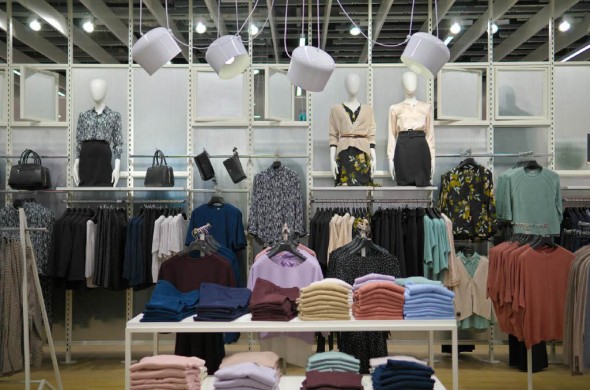In the midst of major shifts in consumer habits and market perception, coupled with the continuing Covid-19 impact on the business environment, companies in the Middle East must revisit their value propositions and competitive advantages to adapt to a new business reality thriving on rapidly evolving digital capabilities and analytics-driven strategies. Whilst, for consumers, the economic outlook is uncertain leading them to spend less, become less brand loyal, and expect more convenience, healthier options, and locally sourced products.
These shifts in expectations and behaviors are putting pressure on retailers and consumer goods manufacturers’ competitiveness and creating more challenges. Retailers are competing with fast-growing online players, while large manufacturers are losing their share to smaller market entrants. Furthermore, geopolitical developments and structural changes are exposing companies to higher costs and bigger risks.
Major shifts observed in the Middle East include:
- Price sensitivity. Consumers are more cautious and are cutting down on their spending, paying closer attention to prices, as the outlook of the job market and the overall economic situation are still widely uncertain.
- Less brand loyalty. Consumers tend to be less brand loyal and many are switching from their preferred brands to less-expensive options. Some of the main reasons leading to this shift are availability, convenience, and value perception.
- Reliance on online shopping. Consumers' expectations are rising, as they want to purchase products quickly and conveniently pushing them towards e-commerce platforms which are accommodating these preferences. In addition, consumers are trying to minimize social exposure to reduce the probability of getting infected with Covid-19 pushing them to purchase products online with home delivery.
- Requirement for hygiene transparency. As consumers are out again amid the continuing Covid-19 situation, hygiene transparency has emerged as one of the top sources of concern. It is increasingly important for retailers to not only follow hygiene protocols but also communicate effectively that they are following those procedures.
- Demand for healthy preferences. Consumers are demanding more products with health benefits. Statements like “all-natural”, “low sugar,” “low fat,” “farm-to-fork”, “Gluten-Free”, among others, are becoming important considerations for them to buy food.
- Preference for local production. Consumers are leaning towards buying locally sourced products, and this trend is evident in the rapid growth of several local brands in apparel, cosmetics, and food, and has been growing in line with border closures due to Covid-19 during which local producers gained more market share and established a bigger clientele base.
- Focus on essentials shopping. Amid declining consumer spending, job loss, and lower-income levels driven by pay cuts and shortened work shifts, the focus is now towards essential categories where spending has increased, and despite the improvements witnessed in line with eased lockdowns and reopening of markets, the momentum is still relatively slow and essentials oriented.
As a result of these shifts, revenues were and are still negatively impacted and competition has largely increased, putting pressure on bottom lines and the survivability of many retailers. This tough business environment has not discouraged new entrants, online players including Amazon, Noon, among others, are luring consumers away from traditional stores and are growing fast. With that being said, the number of retail competitors is rising even as the retail profit pool is shrinking. To survive, companies must refocus their strategy, adapt their value proposition, and develop new capabilities to provide an outstanding customer experience and regain/maintain/grow their market share.
Retailers must revisit their product offerings, branding style, pricing levels, and promotions to meet the specific consumer needs.
For retailers, offering a broad range of products on shelves is no longer an attractive approach to convert consumers. Retailers and manufacturers must move away from traditional broad offerings and instead tailor all elements of their marketing strategy toward clearly defined products targeting specific consumer segments. Companies must revisit their product offerings, branding style, pricing levels, and promotions to meet the specific needs of the increasingly price-sensitive and more demanding consumer. They might, for instance, offer healthier and local products, but at more accommodating prices. In addition, companies must ensure a convenient omnichannel shopping experience, by creating an e-commerce presence targeting new client segments, while manufacturers must improve their go-to-market execution and forge solid relationships with reliable distribution partners.
Retailers should have access to advanced consumer insights to succeed and compete effectively.
Having access to advanced consumer insights is crucial to succeed and compete in the post-Covid-19 period. Personalization will yield substantial benefits. Although personalization has become a top strategic priority for most retailers, few retailers feel they are successfully delivering. In that regard, advanced analytics and machine learning capabilities are being deployed by leading retailers to better understand consumers and generate personalized product recommendations to convert more consumers and push purchases online.
Retailers must foster a culture of innovation and continuous improvement.
As companies are trying to come up with new value propositions to meet target consumer segments, preferences, and needs, they will have to rely on digitization and analytics to optimize their product assortments and focus on the products that are really important to consumers to improve conversion and retention levels. For many retailers today, the product portfolio optimization exercise is simply a delisting of low volume SKUs, however, some of these products are important to certain consumers. This can result in the loss of buyers that could have been loyal, driving them to shop for these delisted categories elsewhere or worse, never coming back. Instead, retailers should assess the buyers’ loyalty level in relation to each SKU in a category by using data analytics and simulations on transactional data to predict customers’ switching behavior.
Retailers should take a data-driven approach to strategy refocus and customer experience.
Retailers should have dynamic strategies to compete efficiently in a fast-shifting consumer behavior reality. They should regularly revisit their strategies and the quality of their customer experience by leveraging digital and analytics capabilities. Even though many companies have relatively succeeded in integrating these capabilities in their go-to-market approach, however, many see their digital initiatives fail. To succeed, companies have to align their strategy, culture, talent, capabilities, and execution efforts; this includes among others:
- Obtaining leadership commitment and ensuring everyone is aligned towards the planned initiatives
- Enabling data analytics into decision-making processes across all organization levels
- Developing a multiskilled team capable of delivering target objectives and adapting to company culture
- Putting the customer at the center of the strategies and offering him the value proposition he needs
- Designing an outstanding customer experience founded on the latest technologies
- Providing proper incentives for the use of technology and analytics on a regular basis
Retailers in the Middle East are facing a lot of challenges trying to find their identity and market position. Closely following up on changing consumer trends, freeing up cash through optimization initiatives, and building new capabilities to improve decision-making and customer experience, are key for retailers and consumer goods manufacturers to come out as winners post Covid-19 and thrive in the upcoming future.



